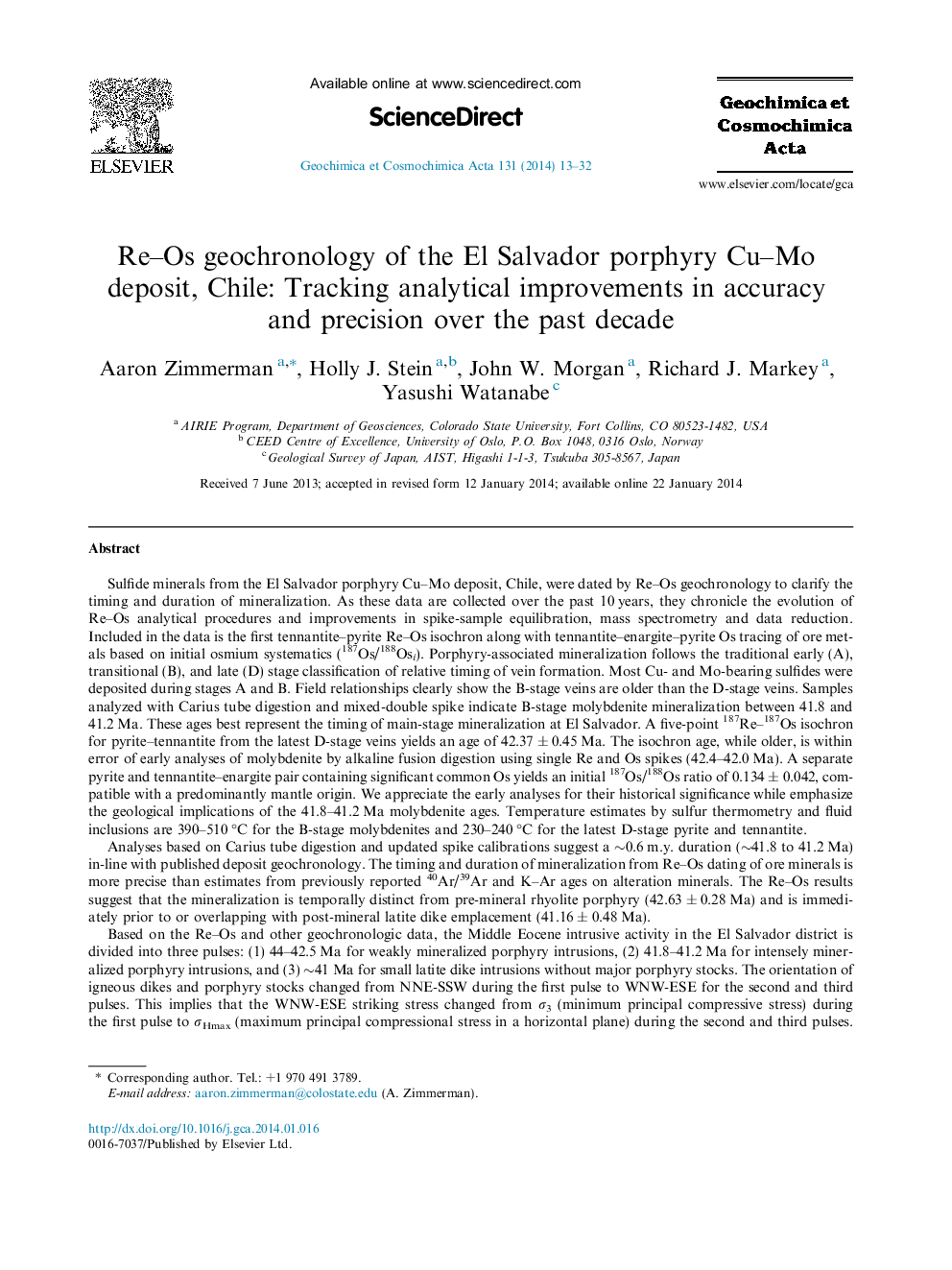| Article ID | Journal | Published Year | Pages | File Type |
|---|---|---|---|---|
| 6438620 | Geochimica et Cosmochimica Acta | 2014 | 20 Pages |
Abstract
Based on the Re-Os and other geochronologic data, the Middle Eocene intrusive activity in the El Salvador district is divided into three pulses: (1) 44-42.5Â Ma for weakly mineralized porphyry intrusions, (2) 41.8-41.2Â Ma for intensely mineralized porphyry intrusions, and (3) â¼41Â Ma for small latite dike intrusions without major porphyry stocks. The orientation of igneous dikes and porphyry stocks changed from NNE-SSW during the first pulse to WNW-ESE for the second and third pulses. This implies that the WNW-ESE striking stress changed from Ï3 (minimum principal compressive stress) during the first pulse to ÏHmax (maximum principal compressional stress in a horizontal plane) during the second and third pulses. Therefore, the focus of intense porphyry Cu-Mo mineralization occurred during a transient geodynamic reconfiguration just before extinction of major intrusive activity in the region.
Related Topics
Physical Sciences and Engineering
Earth and Planetary Sciences
Geochemistry and Petrology
Authors
Aaron Zimmerman, Holly J. Stein, John W. Morgan, Richard J. Markey, Yasushi Watanabe,
